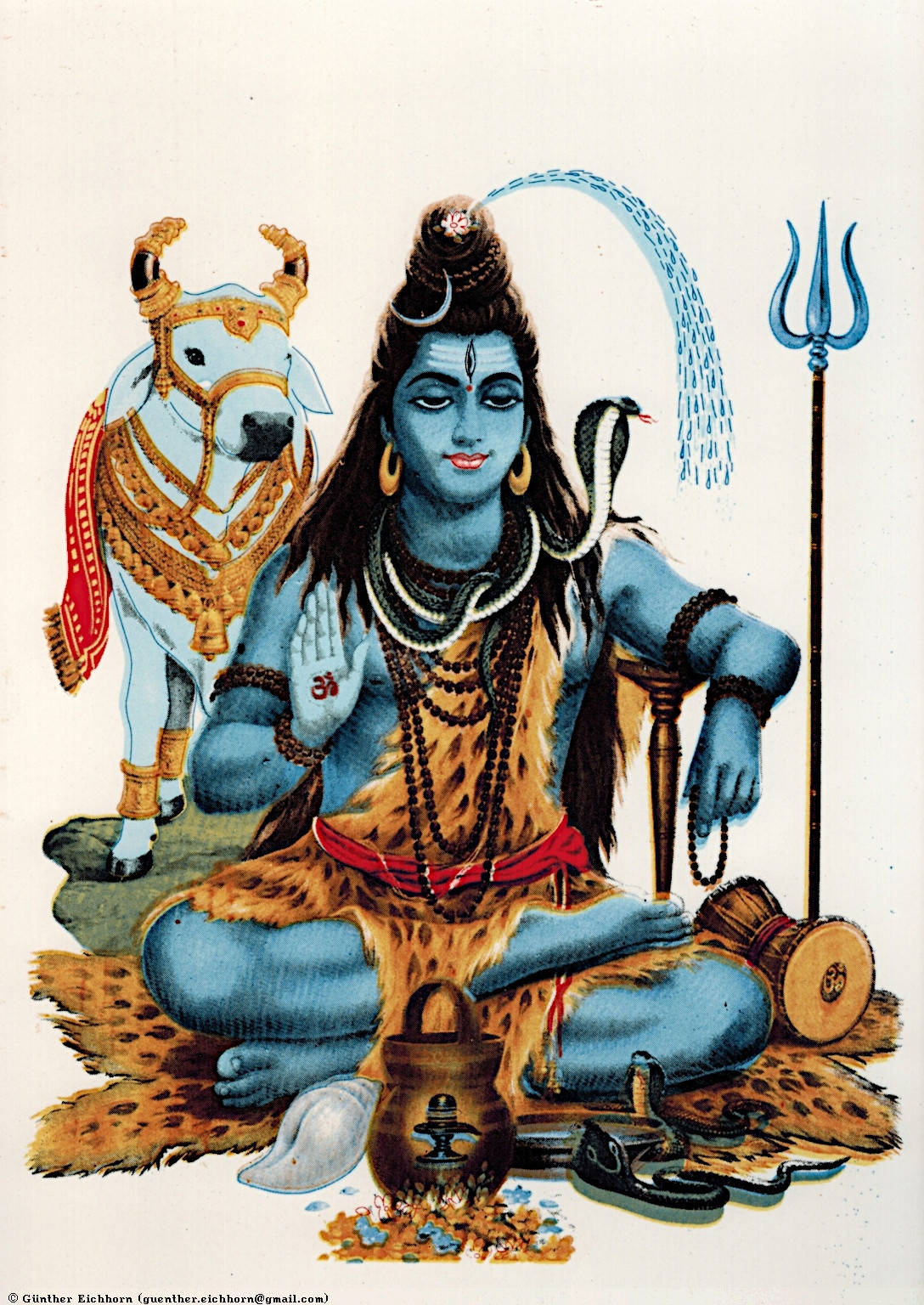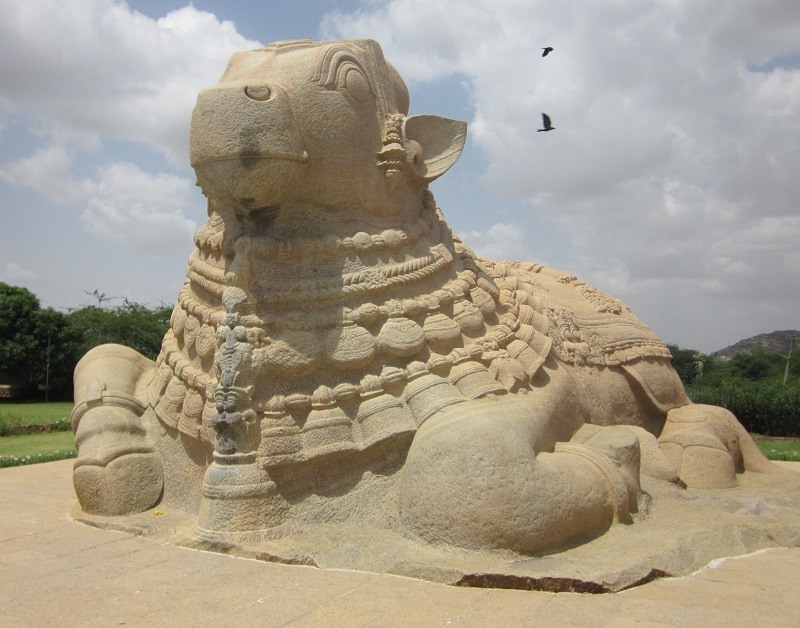INTRODUCTION
Hinduism, one of the world’s oldest and most diverse religions, is replete with a rich variety of symbols and icons that serve as profound sources of spiritual inspiration and wisdom. Among these sacred symbols, the Nandi bull stands as a prominent and revered figure, often found in Hindu temples across the Indian subcontinent. The Nandi bull, known as “Nandin” or “Nandi,” holds a unique and significant role within the complex fabric of Hindu spirituality. As the faithful mount and devoted gatekeeper of Lord Shiva, the Nandi bull transcends its physical form to embody profound spiritual truths and philosophical concepts. This essay explores the multifaceted symbolism of the Nandi bull in Hinduism, looking into its historical, mythological, and philosophical dimensions, shedding light on its significance as a symbol of unwavering devotion and the spiritual journey towards enlightenment.
Historical Roots of the Nandi Bull
To understand the symbolism of the Nandi Bull, it’s essential to delve into its historical roots. Nandi, the bull, is believed to be the divine mount (vahana) and chief devotee of Lord Shiva, one of the principal deities in Hinduism. The origin of the Nandi Bull can be traced back to ancient India, where the worship of Lord Shiva and his vehicle, Nandi, gained prominence.
According to Hindu mythology, Nandi was born to the sage Shilada, who had been blessed with a boon that he would have a son with the appearance of Lord Shiva. Nandi, with his bull-like features and unwavering devotion, epitomiSed the qualities of humility, loyalty, and devotion. This divine association and Nandi’s unique characteristics led to his revered status in Hinduism.

Symbolism of the Nandi Bull
The Nandi Bull symbolises various aspects that hold deep spiritual meaning within the Hindu tradition. These include:
- Loyalty and Devotion: Nandi is often depicted as sitting at the entrance of Lord Shiva’s abode, Mount Kailash. This symbolises unwavering loyalty and devotion, as Nandi guards the entrance and allows only those with pure intentions to enter. In this sense, Nandi represents the idea that devotion and humility are the keys to accessing the divine.
- Strength and Endurance: As a powerful and robust bull, Nandi embodies strength and endurance. This symbolism suggests that devotees should cultivate inner strength and resilience to overcome life’s challenges and obstacles.
- Dharma and Righteousness: Nandi is also associated with dharma, the moral and ethical code in Hinduism. His upright posture and steadfast devotion signify the importance of leading a righteous and virtuous life.
- Fertility and Abundance: In some traditions, Nandi is associated with fertility and abundance. Farmers and rural communities often venerate Nandi, seeking his blessings for prosperous harvests and agricultural success.
- Symbol of Virility: The bull is a symbol of virility and masculinity in Hindu culture. This aspect of Nandi represents the balance between masculine and feminine energies, emphasising the harmony and interconnectedness of opposites.

Religious Significance
The Nandi Bull’s religious significance is primarily linked to Lord Shiva, one of the principal deities of the Hindu pantheon. Nandi serves as Lord Shiva’s chief attendant and gatekeeper. Whenever devotees visit a Shiva temple, they first pay their respects to Nandi, seeking his blessings and permission to enter the sanctum sanctorum. This act symbolises the belief that one must purify their heart and mind, demonstrating unwavering devotion and humility, before approaching the divine presence of Lord Shiva.
Nandi is not merely an inert statue or symbol; it is treated as a living being by many devotees. In some temples, priests perform rituals and offerings to Nandi, believing that he can convey their prayers and requests to Lord Shiva. This close association with Lord Shiva elevates Nandi to the status of an intermediary between devotees and their deity, making him an essential part of the worship process.
Furthermore, Nandi is an integral part of the famous Nataraja sculpture, depicting Lord Shiva as the cosmic dancer. Nandi is often depicted as looking up at Lord Shiva in the Nataraja pose, symbolising his admiration and devotion to the divine dance. This depiction reinforces the idea that Nandi is not just a mount but an essential component of Lord Shiva’s divine identity.
Cultural Impact
The Nandi Bull’s influence extends beyond religious rituals and symbolism; it has left a profound mark on the cultural landscape of India. Here are some ways in which the Nandi Bull has influenced Indian culture:
- Architecture and Sculpture: Nandi is a common feature in the architecture of Hindu temples. Enormous Nandi sculptures often guard the entrances of Shiva temples across India. These intricate and majestic sculptures showcase the artistic and architectural prowess of ancient and medieval India.
- Festivals and Celebrations: Several festivals and celebrations in honour of Lord Shiva include reverence for Nandi. Maha Shivaratri, a major Hindu festival dedicated to Lord Shiva, witnesses grand processions where idols of Nandi are carried through the streets with great pomp and devotion.
- Art and Literature: Nandi has been a recurring motif in Indian art and literature. His image appears in classical dance forms, paintings, and ancient scriptures, reflecting the significance of this symbol in artistic expression and storytelling.
- Spiritual Teachings: The devotion and loyalty exhibited by Nandi serve as valuable spiritual teachings in Hinduism. Many spiritual leaders and gurus draw inspiration from Nandi’s qualities and use them as lessons in leading a righteous and dedicated life.Agriculture and Rural Life: In rural India, Nandi is often associated with agriculture and fertility. Farmers seek Nandi’s blessings for bountiful harvests and protection of their cattle. This connection between Nandi and rural life underscores the cultural and agricultural significance of this symbol.
 Ancient statue of Lord Shiva’s bull Nandi found near Mysuru | The Financial Express
Ancient statue of Lord Shiva’s bull Nandi found near Mysuru | The Financial Express
The Nandi bull in Hinduism stands as a remarkable embodiment of devotion, symbolism, and spirituality. This sacred symbol, with its roots in ancient mythology and its lasting presence in temples and rituals, serves as a timeless reminder of the multifaceted nature of Hinduism itself. As the vahana (mount) and the chief devotee of Lord Shiva, Nandi signifies the importance of unwavering loyalty and steadfast commitment on the spiritual path. Moreover, its symbolism extends beyond its role as a mere physical representation, transcending into philosophy, teaching us valuable lessons about dharma, the interconnectedness of life, and the pursuit of ultimate truth.
The Nandi bull’s presence and reverence in Hinduism highlight the religion’s ability to seamlessly integrate the tangible and the metaphysical, the mundane and the divine. It invites individuals to explore deeper layers of meaning, encouraging introspection and spiritual growth. Through the symbolism of the Nandi bull, Hinduism continues to inspire countless souls to embark on their own spiritual journeys, reminding us all of the wisdom and beauty that can be found in the rich tradition of this ancient faith.
In the end, the Nandi bull remains not just a symbol but a live evidence to the legacy of Hinduism, reminding us of the eternal quest for enlightenment and the boundless devotion that fuels it. Its presence continues to inspire seekers to embrace the divine within and embark on a journey of self-discovery and spiritual awakening, in harmony with the profound teachings of Hinduism.

Contributor




